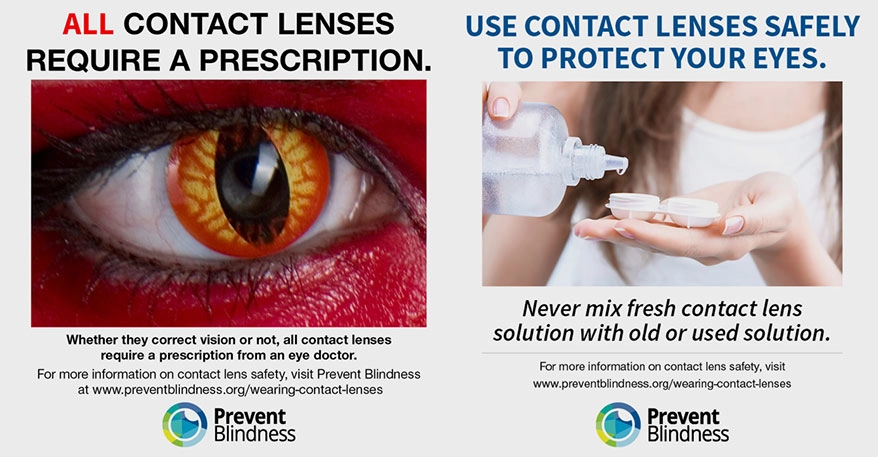
Contact lenses offer a convenient and versatile way to correct vision problems, providing clear and unobstructed sight. However, unlike eyeglasses, contact lenses are medical devices that directly touch the sensitive surface of your eyes. This close proximity necessitates a prescription from an eye doctor to ensure proper fit, safe usage, and optimal vision correction.
This article will delve into the reasons why why do you need a prescription for contacts is crucial for maintaining eye health and achieving clear vision. We’ll explore the nature of contact lenses as medical devices, the importance of an eye exam in determining your refractive error, and the factors involved in choosing the right type of contact lenses for your needs.
Contact Lenses as Medical Devices
Contact lenses are classified as medical devices due to their direct contact with the cornea, the transparent outer layer of the eye. This intimate interaction means that improper fit or material can lead to various complications, including discomfort, irritation, infections, and even permanent damage to the cornea.
Unlike eyeglasses, which sit at a distance from the eyes, contact lenses rest directly on the surface of the cornea, influencing its shape and function. Therefore, it’s essential to have lenses that are precisely tailored to your individual eye measurements and refractive needs. A qualified eye doctor can assess your eye health, determine the appropriate lens type, power, and material, and provide guidance on proper insertion, removal, and care practices.
Prescription Requirement for Eye Safety

The prescription requirement for contact lenses is primarily driven by safety concerns. An eye exam conducted by an optometrist or ophthalmologist allows them to evaluate your vision, assess the health of your eyes, and identify any underlying conditions that may affect lens wear.
Without a proper prescription, you risk purchasing lenses that are either too strong or too weak for your vision needs. This can result in blurry vision, eye strain, headaches, and difficulty performing daily tasks. Moreover, incorrect lens fit can lead to corneal abrasions, infections, and other serious complications. A prescription ensures that the lenses you wear are specifically designed to correct your individual refractive error and minimize the risk of adverse effects.
Importance of an Eye Exam
An eye exam is a crucial step in obtaining a contact lens prescription. During this comprehensive evaluation, your eye doctor will assess various aspects of your vision, including:
Refraction:
This test determines your refractive error, which indicates how much your eyes struggle to focus light correctly. It helps determine the necessary lens power (sphere, cylinder, and axis) to correct your vision.
Visual Acuity:
This measures your ability to see clearly at different distances. Your eye doctor will use a Snellen chart or other visual acuity tests to assess your sharpness of vision.
Eye Health Examination:
Your eye doctor will examine the health of your eyes, including the cornea, lens, retina, and optic nerve, looking for any signs of disease or abnormalities that may affect contact lens wear.
Refractive Error and Lens Prescription

Refractive error refers to a condition where the shape of your eye prevents light from focusing correctly on the retina, resulting in blurred vision. Common types of refractive errors include:
- Myopia (Nearsightedness): Difficulty seeing distant objects clearly.
- Hyperopia (Farsightedness): Difficulty seeing near objects clearly.
- Astigmatism: Blurred vision at all distances due to an irregularly shaped cornea.
- Presbyopia: Age-related loss of near vision focusing ability.
Your eye doctor will determine your specific refractive error during the eye exam and prescribe contact lenses with the appropriate lens power to correct it.
Choosing the Right Contact Lenses
With various types of contact lenses available, selecting the right option depends on your individual needs and lifestyle.
Lens Types:
- Soft Lenses: Made from flexible materials that are comfortable for daily wear.
- Rigid Gas Permeable (RGP) Lenses: Durable and provide sharper vision but may take some time to adjust to.
- Hybrid Lenses: Combine the comfort of soft lenses with the clarity of RGP lenses.
Lens Material:
Different materials offer varying levels of oxygen permeability, moisture retention, and durability. Your eye doctor will recommend a material based on your eye health and preferences.
Lens Wear Schedule:
Contact lenses are available for daily, weekly, or monthly wear schedules. Choose a schedule that suits your lifestyle and comfort level.
Conclusion
Contact lenses offer a convenient and effective way to correct vision problems, but their direct contact with the eyes necessitates a prescription from an eye doctor. A comprehensive eye exam is essential to determine your refractive error, assess your eye health, and ensure the proper fit and type of contact lenses for safe and optimal vision correction. By prioritizing your eye health and seeking professional guidance, you can enjoy the benefits of clear vision and comfortable contact lens wear.
